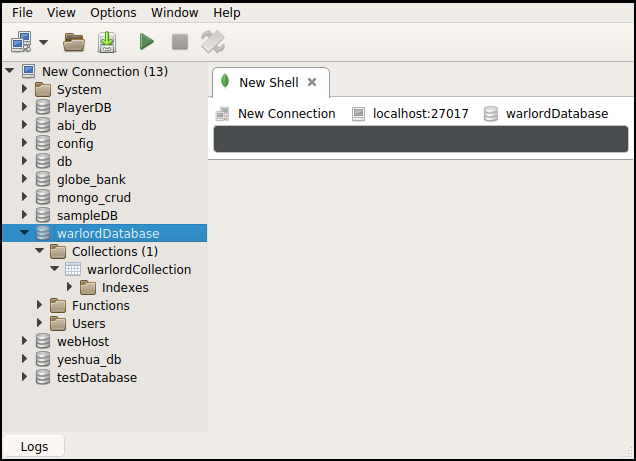

Plus, the repo is now open-source on GitHub.
#Mongodb robo 3t free
MongoDB recently announced that the fully featured Compass GUI is completely free for everyone to use. It’s platform-agnostic and provides a graphical view of your database without the need to use a query language. The creators of MongoDB (Mongo) have their own GUI called Compass. (Image courtesy of MongoDB Compass GitHub Repository) The best one for you will depend on the scope of your project, the features you need, and your budget. Each has features that set it apart from the rest. Relational database to MongoDB data transfer: Automate tedious and error-prone data transfers between database types.īelow is an opinionated list of the best MongoDB GUIs on offer in 2023.Server and query analytics: Insights into query and server performance.An aggregation framework: Build queries out step-by-step, test along the way, then export into usable code.Query autocomplete: Auto-suggestions for collections, fields, methods, and operators.A visual query editor: Click or drag-and-drop elements to create queries.The best MongoDB GUIs share similar features: MongoDB GUIs provide a user interface for your MongoDB database that gives you the ability to visualize data and edit queries without the use of shell commands (or with them - more on that later). It’s definitely possible to query your Mongo data exclusively from the command line, but if you’re working with even medium-sized datasets, GUIs offer a helpful alternative. Traversing objects and writing long queries in the command line can get annoying fast, so using the shell is usually best for quick peeks or admin tasks. It’s included in the MongoDB Server installation, so you’re all set as long as you’re comfortable with shell commands.
#Mongodb robo 3t update
The most basic way to access MongoDB is through the mongo shell you can use it to query, update data, and complete admin tasks. Working with MongoDB through the command line isn’t exactly a cakewalk: This post will walk through the best MongoDB GUIs available for reading from and writing to your MongoDB clusters. You’re going to need to parse data for your front-end eventually, and with document DBs, your data is already stored in the right format (give or take a. MongoDB went public in 2017 and is worth more than $30 billion today.ĭocument DBs work through nested key-value pairs instead of relational tables and columns. What makes MongoDB and other NoSQL DBs attractive is flexibility instead of being held to a rigid schema that scales vertically, you can evolve your schema as you grow and scale horizontally. That’s it, hit the test button and cheers.MongoDB is a NoSQL database that more than a quarter of developers use in some capacity. Use your container’s internal ip address to connect mongo database, that you found in docker inspect command.Ĥ. Put your admin user credentials to authentication for mongo db.ģ.


“NetworkSettings” -> “Networks” -> “IPAddress”.Įxternal ip address is machine ip address, in our case it is x.x.x.1. When you do the docker inspect command, you grabbed the container’s IP on the docker network. The internal IP is your container’s address in the docker network, which is isolated from you host network. The main problem and confusion is, container’s internal ip address and external ip address. What is the issue or problem when we want to connect mongo db docker container with robo 3T?. Normally we connect mongo db on over local machine simply localhost:27017 or IP:27017 normal machine, where mongo db is running as background service.


 0 kommentar(er)
0 kommentar(er)
